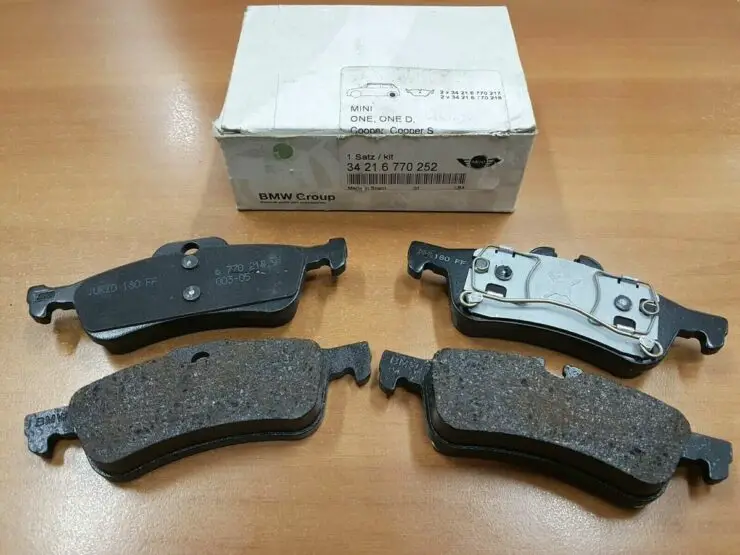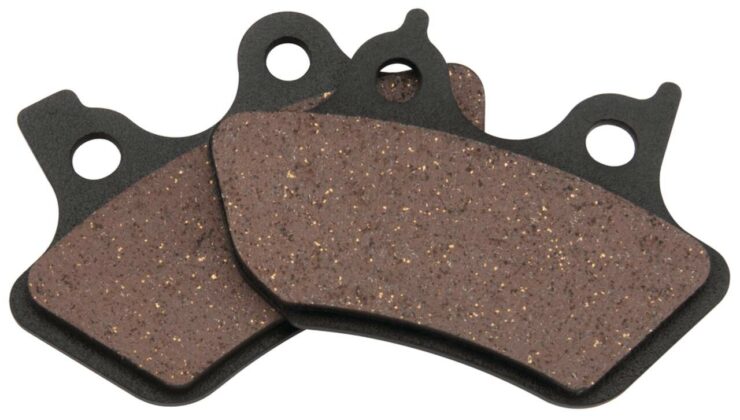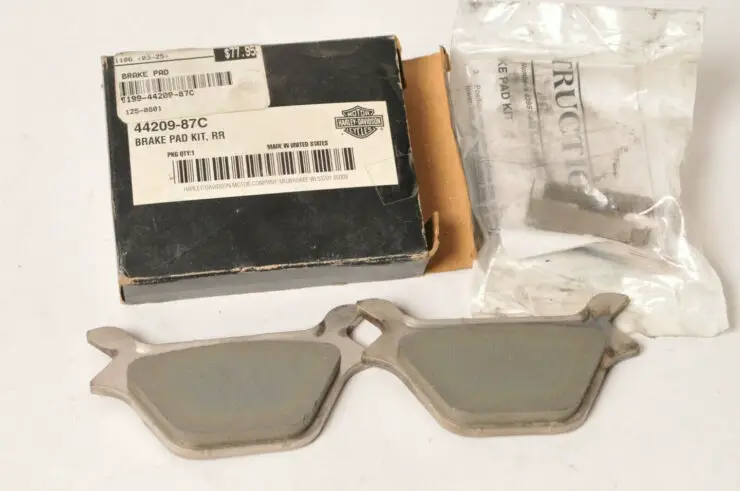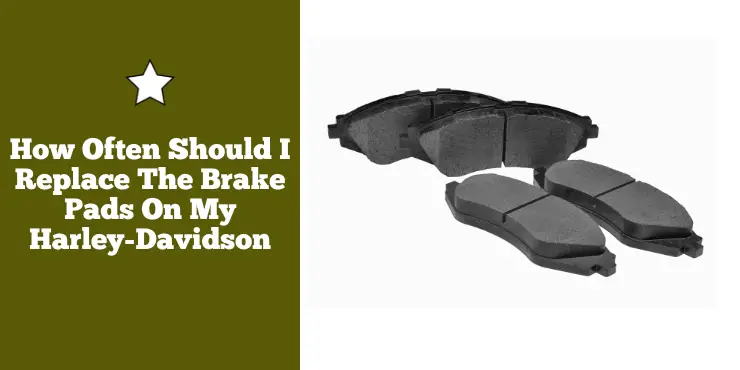Wanting to hit the open road on your prized Harley-Davidson is a thrill like no other. The wind in your face, the sound of the engine roaring beneath you – it’s pure freedom on two wheels. But amidst the adrenaline and excitement, it’s important to remember the crucial role of your brake pads in ensuring your safety. So, how often should you replace the brake pads on your Harley?
Replace brake pads every 10,000-20,000 miles, or sooner if you notice signs of wear, as riding habits and conditions affect brake life.
In this article, we’ll dive into the factors that impact the lifespan of your brake pads and provide tips to help you determine the answer to this burning question. Whether you’re a seasoned rider or a newbie to the world of motorcycles, buckle up and get ready to learn how to keep your Harley-Davidson stopping smoothly and reliably.
Importance of well-functioning brake pads in Harley-Davidson bikes
Harley-Davidson bikes are synonymous with style, power, and the feeling of freedom. These iconic machines aren’t just known for their distinctive design and roaring engines but also for their amazing braking capabilities. This is largely thanks to an important component called brake pads.
>>> Click here to read our review of the Best Break Pads For Harley-Davidson <<<
Brake pads are key components of a Harley-Davidson bike’s braking system, responsible for converting the kinetic energy of a moving motorcycle into heat energy, ultimately bringing the motorcycle to a halt. These components are sandwiched between the brake calipers and the brake discs (rotors) and serve as the friction material that creates the needed resistance to decelerate and stop the bike.
Brake pads are typically constructed using a combination of materials designed to withstand extreme temperatures and offer reliable stopping power. The most important element of a brake pad will be the friction material. In Harley-Davidson bikes, this material is usually a composite of materials like organic compounds, semi-metallic compounds, or ceramic compounds. These materials should be selected carefully to offer optimal friction and heat resistance.
The friction material will be attached to the backing plate made up of steel or another sturdy material. The backing plate will give the brake pad structure and strength, making sure that it remains securely in place within the caliper. Some brake pads might also include shims and insulation for reducing noise and vibrations during braking. This helps in maintaining a smoother and quieter riding experience.
Here is the importance of well-functioning brake pads in Harley-Davidson motorcycles –
#1. Stopping power
Harley-Davidson bikes are known for their substantial size and power. Brake pads are important for providing the necessary stopping power to bring these machines to a halt safely and efficiently. The friction produced by the brake pads pressing against the rotors is what slows down and stops the bike.
#2. Heat dissipation
Riding a Harley-Davidson bike often involves high speeds and heavy loads, resulting in significant heat generation during braking. Brake pads are designed for dissipating this heat efficiently, preventing overheating and brake pads, which can compromise braking performance.
#3. Safety
The safety of the rider and passengers is paramount and brake pads play a key role in ensuring the bike can come to a stop quickly and reliably in various road conditions, including wet or slippery surfaces.

#4. Longevity
Harley-Davidson riders value their motorcycles and want them to last. High-quality brake pads don’t just provide excellent stopping power but also have a longer lifespan. Regular maintenance and replacement of worn brake pads are important for rider safety and bike longevity.
Factors to consider when replacing brake pads
Ensuring the braking system of your Harley-Davidson bike is in top-notch condition is important for both your safety and riding enjoyment. Brake pads play a key role in the braking system of your bike. Knowing when and how to replace them will be important. This is why you will need to consider certain factors when replacing brake pads. Here are the factors you must consider when replacing brake pads in your Harley-Davidson bike –
#1. Brake pad material
One of the most important factors to consider when replacing brake pads in your Harley-Davidson bike would be the choice of brake pad material. The most common options are organic, semi-metallic, and ceramic pads.
Organic brake pads are quiet and provide great initial bite but might wear out faster. Semi-metallic brake pads offer excellent stopping power and durability but can be a bit noisier. Ceramic brake pads are known for their long lifespan, low noise levels, and consistent performance but might be pricier. The choice will depend on your riding style, budget, and preferences.
#2. Riding style and conditions
Consider your riding style and the typical riding conditions you might encounter. If you frequently ride in stop-and-go traffic, urban environments, or hilly terrain, you might want brake pads designed for heavy-duty use. Meanwhile, if you primarily enjoy long highway riding, you should prioritize comfort and noise reduction.
#3. OEM vs. aftermarket parts
Harley-Davidson offers OEM brake pads designed specifically for your motorcycle’s model. These pads are engineered to meet the manufacturer’s standards and are a reliable choice. However, aftermarket brake pads can also be suitable, often offering a wider range of options in terms of materials and price points. Be sure that you choose reputable aftermarket brands and check for compatibility with your motorcycle’s make and model.
#4. Maintenance schedule
Regular maintenance will be key to prolonging the lifespan of your brake pads. Check your bike’s owner’s manual for Harley-Davidson’s recommended maintenance schedule. Routine inspections of your brake pads and rotors help you identify signs of wear and determine when replacement is needed.
#5. Rotor condition
When replacing brake pads, you should consider the condition of the brake rotors. If the rotors are scored or damaged, it is advised to resurface or replace them along with the brake pads for optimal braking performance.
#6. Get professional installation
While experienced riders might choose to replace brake pads themselves, it is often recommended that you should have a professional mechanic perform this task. Proper installation will be crucial for safety and a qualified technician will ensure that everything is adjusted correctly.

Signs that you need to replace the brake pads on your Harley-Davidson
Harley-Davidson bikes are known for their power and performance. However, for all the power to be safe and enjoyable, a well-maintained braking system will be necessary. Brake pads are an important component of this system and recognizing the signs and symptoms that they need replacement will be important for rider safety. Here are some of the signs that the brake pads on your Harley-Davidson bike need a replacement.
Squealing or squeaking noises
One of the most noticeable and common signs that the brake pads on your Harley-Davidson bike need replacement will be the presence of squealing or squeaking noises when you apply the brakes. This high-pitched noise is typically caused by the wear indicator on the brake pads. The indicator is designed to make this noise once the brake pad material becomes too thin, serving as an audible warning that it is time for replacement.
Ignoring these noises can result in further damage to the brake pads and decreased braking efficiency. If you hear persistent squealing or squeaking during braking, it will be important to inspect your brake pads promptly.
Reduced braking performance
Reduced braking performance will be a significant indicator that the brake pads on your bike are worn down. If your bike doesn’t respond as quickly or effectively to the brake lever or pedal as it used to, it’ll be time to check the brake pads. When brake pads wear out, there is less friction between the pads and the brake rotors, resulting in diminished stopping power.
This can be especially dangerous when riding in traffic or during emergency braking situations, so it’ll be imperative to address this issue promptly.
Vibrations when braking
If you’re noticing vibrations or pulsations in the handlebars or brake lever when applying the brakes, it could be a sign that the brake pads are worn unevenly or have developed grooves. These irregularities can result in uneven braking surfaces, causing vibrations.
Vibrations during braking don’t just compromise your control over the bike but also indicate that the brake pads are no longer making consistent contact with the rotor. This symptom should not be ignored as it can result in further damage to both the pads and the rotors.
Longer braking distances
An increase in braking distance will be a clear indicator of deteriorating brake pad performance. When your bike takes longer to come to a stop than it did previously, it’ll be time to consider replacing the brake pads. Longer braking distances tend to pose a serious security risk, especially in emergency situations or adverse road conditions.
How often should I replace the brake pads on my Harley-Davidson?
Owning a Harley-Davidson bike comes with a deep appreciation for the thrill of riding a powerful bike on the open road and the freedom that comes with it. However, ensuring the safety and longevity of your bike will help maintain its critical components, including the brake system. Brake pads are crucial components that also require attention and replacement for ensuring optimal stopping power. However, this begs the question, how often should I replace the brake pads on my Harley-Davidson bike? The frequency of brake pad replacement will depend on a variety of factors.
Before diving into the answer for how often should I replace the brake pads on my Harley-Davidson bike, it’ll be important to emphasize the importance of regular brake pad inspection. Due to factors like riding style, environmental conditions, and terrain, wear rates can vary greatly. Therefore, Harley-Davidson owners must make it a habit to visually inspect the brake pads during routine maintenance or service intervals.
Harley-Davidson, like any other motorcycle manufacturer offers guidelines and recommendations regarding brake pad replacement in the owner’s manual. While these recommendations can vary depending on your specific bike model and year, it is advised that you should inspect the brake pads once every 5,000. However, the exact timeline for replacing the brake pads will greatly depend on the type of riding.
Street Riding
For most Harley-Davidson riders who primarily use their motorcycles for street riding, the typical recommended interval for inspecting and replacing the brake pads on your bike would be around 10,000 to 15,000 miles. This is a general guideline and will vary based on different factors like the specific model, riding conditions, and the quality of brake pads.
Regardless of mileage, regular visual inspections of your brake pads will be crucial. Check the thickness of the brake pad material through the caliper or by removing the wheel. In case the pad material is significantly worn out or evenly worn, it will be time for replacement.
Pay close attention to warning signs like squealing or squeaking noises during braking and reduced braking performance. These are clear indicators that your brake pads need replacement.
Aggressive riding
If you’re an aggressive rider who loves spirited riding on twisty roads or frequently carries a passenger or additional cargo, your brake pads might wear out more quickly than those of a casual street rider. Aggressive riders might have to inspect and replace their brake pads more frequently, typically once every 3,000 to 5,000 miles. The increased wear results from more frequent and forceful braking.
Continue to perform regular visual inspections. Aggressive riding generates more heat and wear on the brake pads, making consistent inspections much more critical. Aggressive riders must periodically test their brake performance in safe conditions to make sure that the brakes are up to the task. If you notice any decline in stopping power, it is important to address it promptly.

Track usage
Track usage places a lot of demand on a Harley Davidson bike’s braking system due to extreme speeds and hard braking. Track riders must plan to replace their brake pads before each track day or once every 2-3 track sessions depending on the intensity of use. Racing brake pads designed for track use might have shorter lifespans but offer superior stopping power.
Consider using high-performance or racing brake pads designed specifically for track use. These pads are capable of handling the intense heat generated during track sessions and offer consistent performance.
Alongside frequent brake pad replacements, you must inspect brake fluid levels and condition regularly. The intense braking on the track can heat up the brake fluid, potentially resulting in brake fade. Inspect the rotors for signs of wear and heat damage.
Other considerations when replacing the brake pads
Your riding style and the conditions you encounter on the road can greatly impact the lifespan of your brake pads. If you frequently ride in stop-and-go city traffic or traverse hilly terrain, your brake pads might wear out more quickly than those of a rider who primarily enjoys long highway cruises. Moreover, riding in wet or muddy conditions can accelerate pad wear.
Instead of relying solely on mileage, it is important to pay attention to the warning signs that indicate your bike’s brake pads need replacing. When the brake pads wear down to a certain level, they come equipped with a wear indicator that produces noise to alert you that it is time for replacement. If your Harley-Davidson bike does not stop as effectively as it used to, it will be a clear indication that the brake pads are reaching the end of their lifespan.
You can physically check the thickness of the brake pads by inspecting them through the caliper or by removing the wheel. If the pad material is worn out or unevenly worn, it will be time to replace them.
To ensure utmost safety and performance, it’ll be advised to have your brake pads evaluated by a professional technician during routine servicing. These experts will be able to accurately assess the condition of your brake pads and offer guidance on when replacement is needed.
How to extend the lifespan of brake pads in Harley-Davidson motorcycles?
The longevity and performance of your Harley-Davidson bike’s brake pads will be important for safe and enjoyable riding. However, you will need to maintain the brake pads and follow certain tips to make sure that they last for years to come. Here are some of the tips you must follow to extend the lifespan of brake pads in Harley-Davidson bikes.
#1. Avoid brake abuse
Proper braking techniques will be vital for the longevity of your brake pads. Avoiding brake abuse can greatly extend their lifespan. Apply the brakes smoothly and progressively instead of slamming them on abruptly. Abrupt stops will generate excessive heat and wear on the brake pads.
Utilize engine braking when possible. Downshifting and allowing the engine to help slow down your bike will reduce the reliance on the brakes, hence preserving the brake pads. Overloading your Harley-Davidson motorcycle places extra strain on the brake system. Try to adhere to the manufacturer’s recommended load limits to prevent unnecessary wear on the brake pads.
#2. Regular brake inspections
Frequent brake inspections are important to catch any issues early on and ensure that your brake pads are in great condition. Regularly examine the brake pads through the caliper or by removing the wheel. Look for any signs of wear, uneven wear patterns, or damage. Replace the brake pads if they are significantly worn out.
Pay close attention to squealing or squeaking noises during braking, vibrations, or reduced braking performance. These are indicators that your brake pads might need replacement. Remember to include professional pad evaluations during routine servicing. Technicians can assess the condition of your brake pads and offer expert guidance.
#3. Cleaning and lubrication
Maintaining a clean and lubricated brake system will help reduce friction and prolong the lifespan of your Harley-Davidson bike’s brake pads. You must periodically clean your brake calipers, pistons, and rotor surfaces. Brake dust and debris can end up accumulating and creating additional friction, wearing out the brake pads prematurely.
You must apply a high-temperature brake lubricant to moving parts like the caliper pins and slide pins. This will help reduce friction and ensure smooth operation. Be extremely cautious when applying lubricants to avoid contaminating the brake pad material itself. You should use only approved brake-specific lubricants.
#4. Replace brake fluid
Brake fluid is another critical component of your Harley-Davidson bike’s braking system and its condition can affect the performance of your brake pads. Harley-Davidson recommends that you should replace the brake fluid at regular intervals, typically once every 18-24 months to maintain optimal performance and prevent brake fade.
Moreover, brake fluid can also absorb moisture over time, resulting in reduced brake efficiency. A brake fluid flush helps in removing moisture and maintains the fluid’s integrity. Brake fluid replacement is a precision task that must be handled by a qualified technician to ensure the system is properly bled and free of air bubbles.
FAQs
How frequently should I change the brake pads on my Harley-Davidson?
The recommended frequency for changing brake pads on a Harley-Davidson varies depending on several factors, including your riding style, the type of brake pads you are using, and the overall condition of your bike. However, as a general guideline, it is typically recommended to replace brake pads every 12,000 to 15,000 miles.
When is it time to replace the brake pads on my Harley-Davidson?
There are a few signs that indicate it’s time to replace the brake pads on your Harley-Davidson. Firstly, if you notice any decrease in braking performance, such as longer stopping distances or a spongy brake lever feel, it’s a good indicator that the brake pads have worn down. Additionally, if you inspect the brake pads and they measure less than 1/8 inch thick, it’s definitely time to replace them.
How can I extend the lifespan of the brake pads on my Harley-Davidson?
To extend the lifespan of the brake pads on your Harley-Davidson, it’s important to practice good braking habits. Avoid excessive braking and instead, try to anticipate and plan your braking maneuvers ahead of time. Additionally, avoid riding with aggressive stop-and-go habits as it puts extra strain on the brake pads. Regular maintenance and inspections are key, so make sure to keep the brake system clean and well-lubricated, and check the brake pads for wear regularly.
>>> Read more about Break Pads For Harley-Davidson <<<

